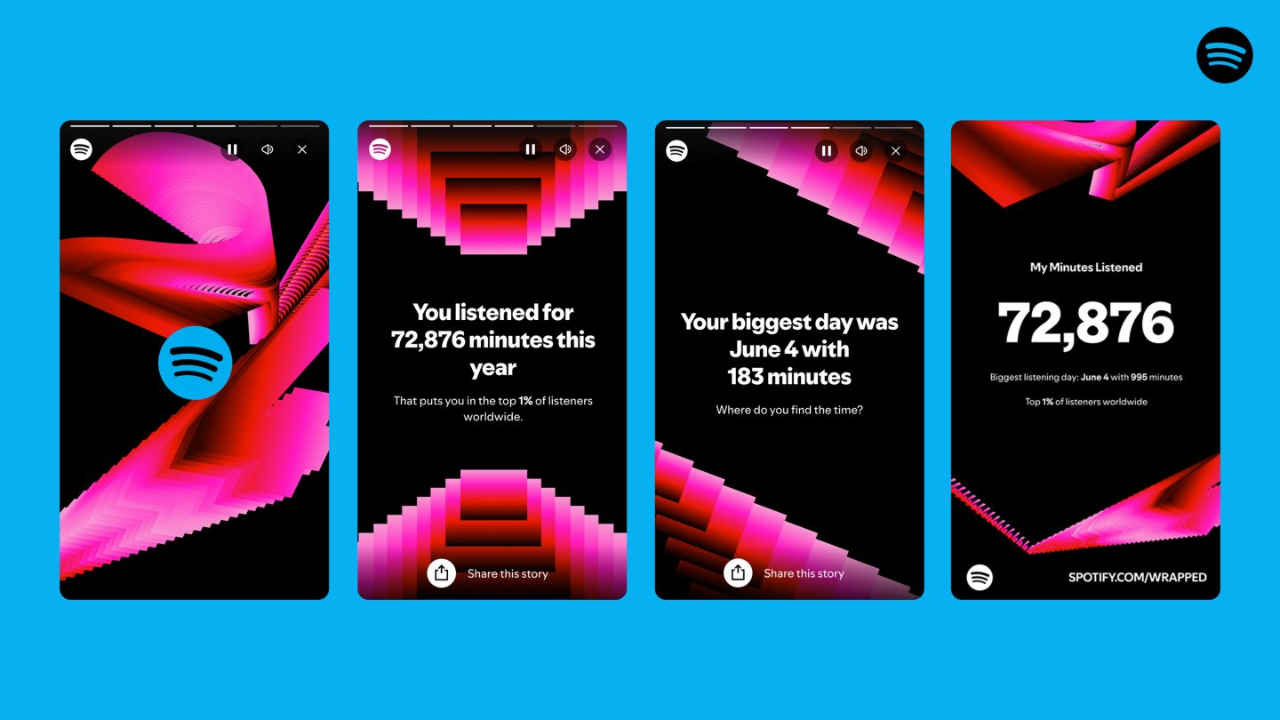How Spotify Mishandled AI
Or why Wrapped 2024 Sucked
When I launched The Bhatt Report earlier this year, one of the first topics I planned to tackle was Spotify’s financial woes. Yet, just as I began drafting, Spotify dropped some surprisingly positive revenue numbers, signaling that its days of unprofitability were over. The catalyst? AI. Through its smart integration of AI, Spotify turned a corner, impressing shareholders with a profitable quarter. In my year-end roundup, almost every major tech company had found success through AI in some shape or form. From algorithms to AI-driven staffing solutions, companies embraced the tech to streamline operations and expand their reach. Spotify, with its AI-powered enhancements, managed to do just that.
AI, when deployed effectively, is essential for the future of tech companies. However, AI must be implemented with foresight and precision. Take NVIDIA, for example—its seamless AI integration has elevated the company to new heights. Or look at Nooks, a Bay Area startup that earned a spot on Forbes’ 30 Under 30 thanks to its innovative AI sales assistant. These companies excel because AI augments their existing products, enhancing customer experiences without replacing the core value propositions. But there’s a key lesson here: AI should complement a service, not overhaul it entirely.
Sadly, this is where Spotify went wrong with its 2024 Wrapped campaign.
Spotify Wrapped: The Sweet Spot
Even in its early, unprofitable years, Spotify was always seen as a leader in the music streaming space. The company’s algorithmic prowess, clean UI, and the much-loved Spotify Wrapped were major contributors to its status. Wrapped, for the uninitiated, is Spotify’s year-end ritual where it takes users on a personalized journey through their listening habits, showcasing top songs, artists, and genres. Ironically, Wrapped was inspired by an email newsletter from a former intern, Jewel Ham, who never got offered a full-time role at Spotify.
Eventually, competitors like Apple Music, YouTube Music, and Tidal caught on and launched their own versions of year-in-review features. But Wrapped remained a cut above. While it didn’t offer as much data as some of its rivals, it struck a perfect balance: it was simple, nostalgic, and fun. The emotional connection Wrapped fostered was unique. Your favorite songs played in the background, a brief yet touching review of your year as a listener, with small surprises like messages from the artists themselves. It made you feel seen. Spotify had created a tradition that users genuinely looked forward to every December.
Over time, Wrapped evolved. It arrived earlier in November, more interactive elements were introduced, and artists recorded personalized video messages for their top fans. These updates were thoughtful and added to Wrapped’s charm. For all its data, Wrapped was never overwhelming—it was your year in music, presented simply and beautifully.
In 2023, Spotify added a new feature that told you which city your listening habits most resembled. (For me, it was Noida, India, if you’re curious). Wrapped was now more engaging than ever, a highlight of the year. Which is why 2024 Wrapped’s bungled rollout has left fans scratching their heads.
2024 Wrapped: A Misstep in AI
On December 4th, later than any previous year, Spotify released 2024 Wrapped. The internet’s reaction? Instant confusion and disappointment. It was clear that AI had been integrated into the experience, but not in the way users wanted.
First up, the classic list of top genres was replaced by an abstract “listening mood” feature. Rather than simply telling you that you listened to “Indie Folk,” Spotify now informed you that your mood for the month was “Rainy Day Fingerstyle Folk Rock” (yes, this was an actual example). While AI was employed to generate these labels, Spotify missed the mark. Users have always appreciated Wrapped for its simplicity and clarity, but the new mood descriptors felt like overcomplications. In the past, we could look at our genres and instantly understand what Spotify was communicating. Now, we were left to decode vague, convoluted phrases.
Even worse, Spotify axed some of the most beloved elements of Wrapped. Gone were the insights about our listening style, the comparisons to cities, and the breakdowns of our favorite tracks. The magic that made Wrapped feel personal was lost in a sea of generic AI-generated data.
Spotify did introduce a new feature: an AI-driven podcast that supposedly explained your listening habits throughout the year. But the execution felt off. The technology wasn’t refined enough to deliver an experience that felt meaningful or engaging. Instead of amplifying the charm that Wrapped built over the years, it served as a stark reminder that AI can’t simply replace the human touch.
2024 Wrapped had the data, the AI, and the potential to be another hit—but it missed the mark. The result? A product that, while technically advanced, felt soulless. Wrapped’s appeal wasn’t just in its data; it was the story it told about you as a listener, a story that felt personal, emotional, and familiar. That element was sorely lacking this year.
The Takeaway: AI Should Enhance, Not Replace
Spotify had everything it needed for a standout Wrapped this year: data, AI, and a loyal fanbase. Yet, it failed to preserve the essence of what made Wrapped special. In tech, AI must be used carefully. When used properly, it can transform a product or service—but only when it complements, rather than replaces, the human elements that make a brand resonate. In the case of 2024 Wrapped, Spotify forgot this crucial lesson. They had the right ingredients but didn’t quite know how to mix them.
As the streaming market becomes more competitive, Spotify’s misstep with Wrapped may cost them more than just user disappointment—it may erode the emotional connection that made Wrapped one of the most anticipated events of the year. AI is a tool, not a cure-all. When done right, it can drive growth. When done wrong, it can alienate your core audience. Let’s hope Spotify learns from this mistake and gets it right next year.


